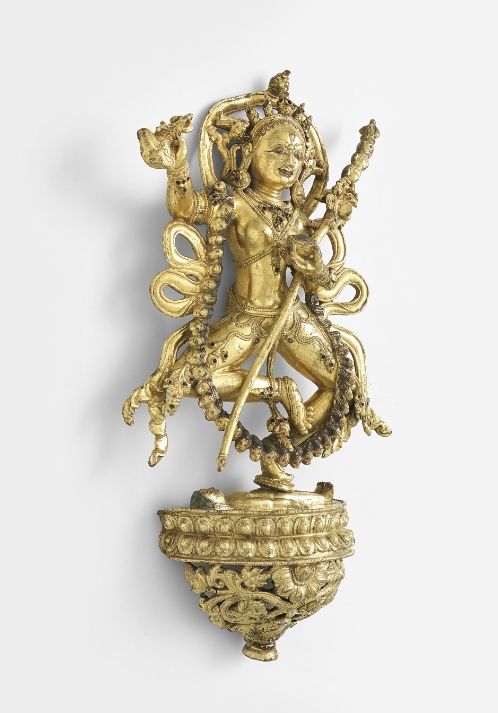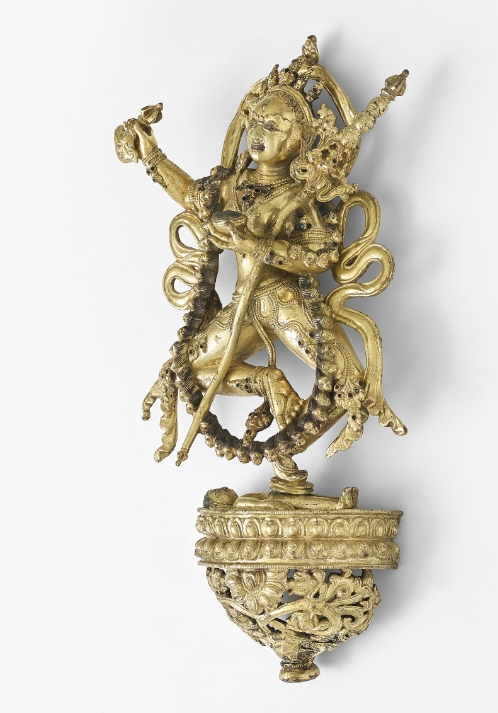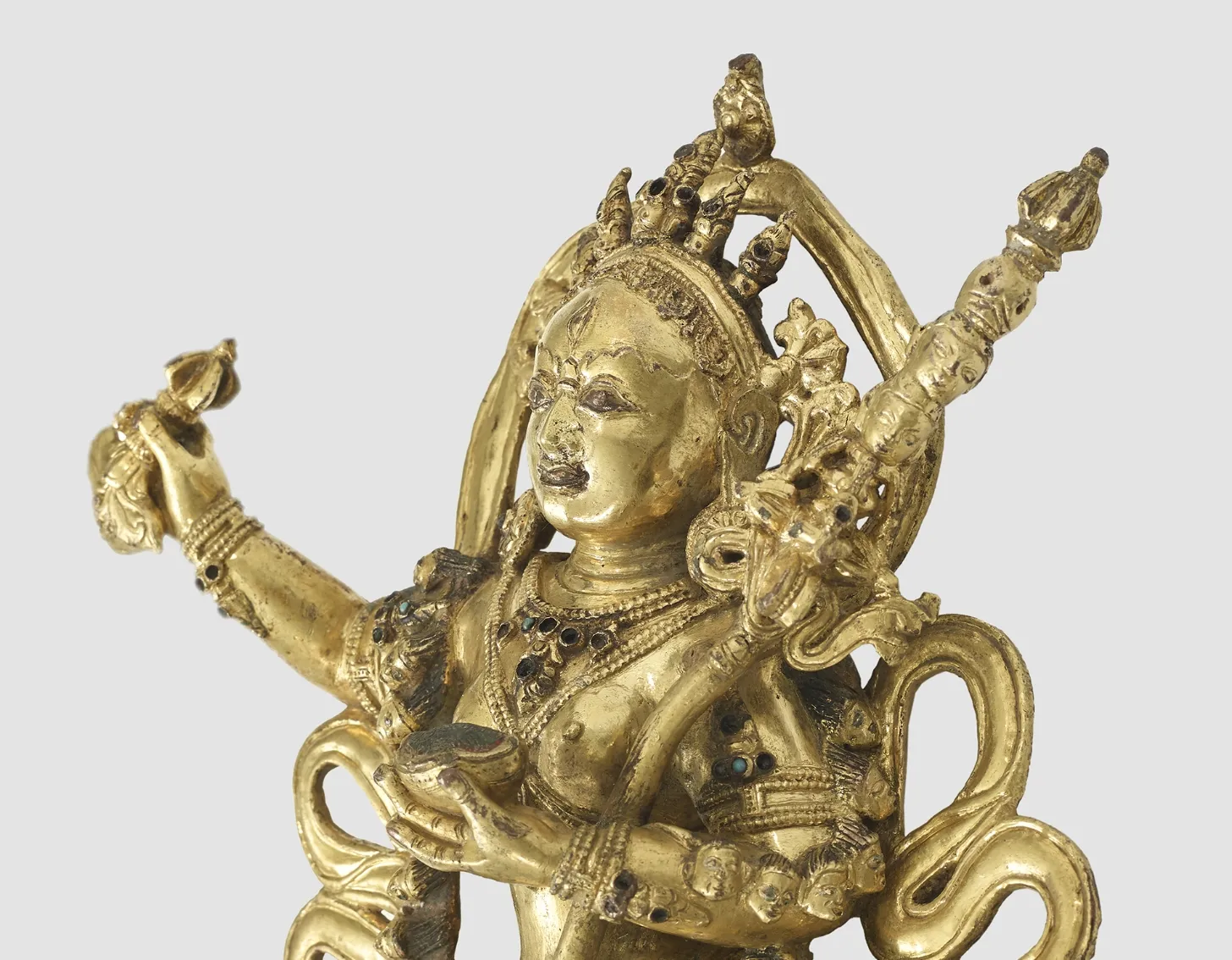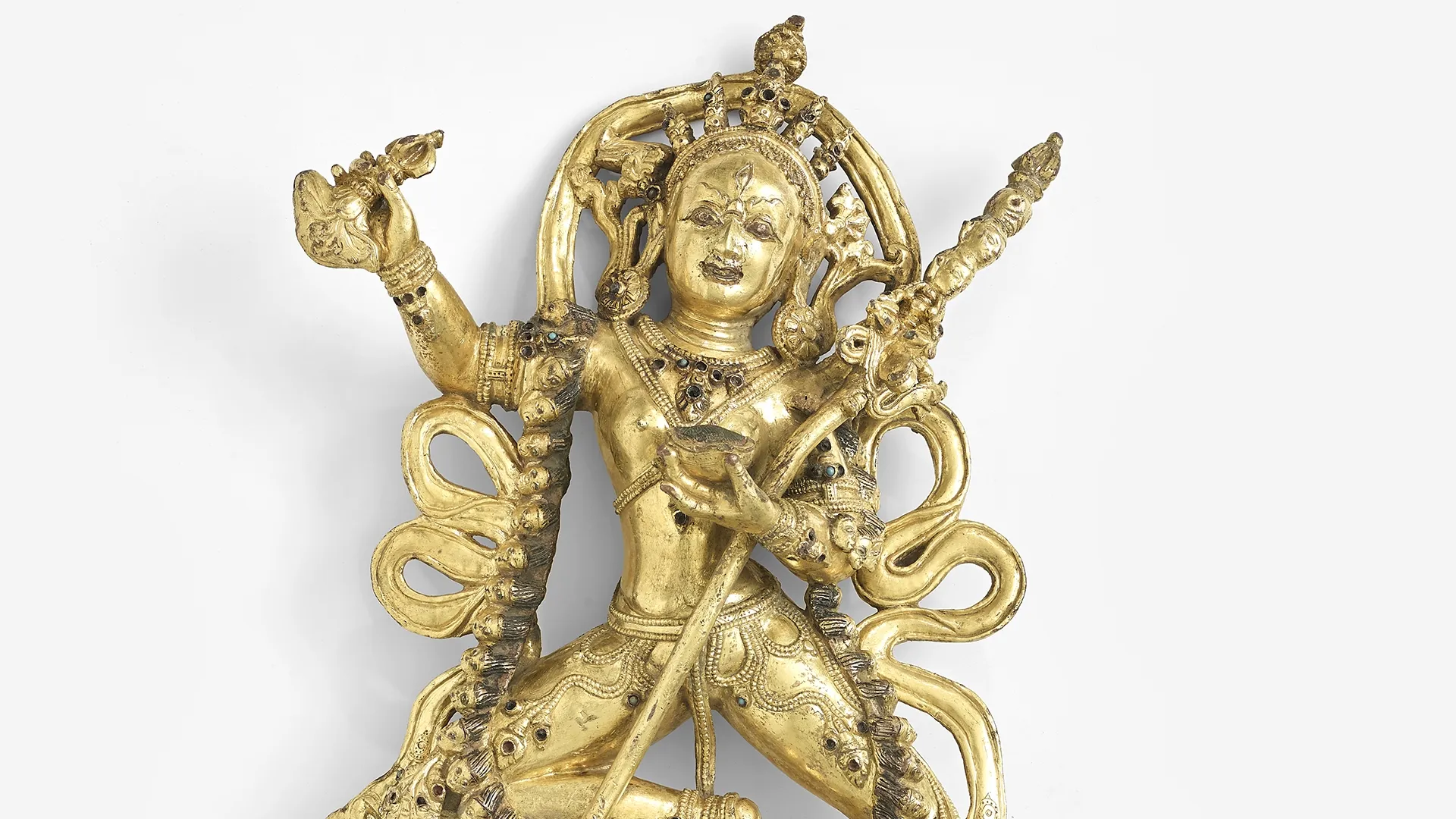A gilt copper sculpture of Vajrayogini was once placed on the upper tier of a massive reliquary commemorating an important Buddhist teacher (cat. no. 18). It closely resembles several other surviving examples of the same genre with some variation in style and period, most dating from the 13th-15th centuries. The first massive reliquary of this type was created at Drigung monastery in 1208. Founder of Drigung, Jigten Gonpo, sought a magnificent reliquary suitable for his recently deceased, beloved teacher, Phagmodrupa. He envisioned a massive stupa in a design generally known as Tashi Gomang (Many Doors of Auspiciousness). The first model he commissioned at Drigung became the foundation for a tradition of creating massive Tashi Gomang monuments, replete with thousands of images, at Drigung monastery and elsewhere in Tibet.
Eight such monuments were created at Densatil monastery between the late thirteenth and the end of the fifteenth centuries. A few photographs of these remarkable structures at Densatil were taken in 1948 by Italian photographer Pietro Francesco Mele, which provides a window into their former glory. These reliquaries were five meters in height, forming a three-dimensional mandala, arranged in recessed tiers with the reliquary containing the deceased’s remains on the top tier. Encrusted with gems, the Tashi Gomang stupa has been described as “a huge golden mountain”.


The Tashi Gomang reliquary tradition continued at Drigung monastery into the 17th century. A recent study has argued that similar c. 13th century Vajravarahi sculptures were associated with a Tashi Gomang stupa at Drigung or elsewhere, and an example in the Rietberg Museum exhibits yet another style variation. The sculptural style of the present Vajrayogini differs from all the others, suggesting that the sculpture was either made for a different reliquary at one of the known sites, or it comes from an unknown site that also must have created Tashi Gomang reliquaries for their deceased masters. All the Vajravarahi figures discussed range from about 30-40 cm in height. Olaf Czaja’s study shows that the Vajrayogini sculptures were placed on the uppermost tier of the reliquary platform at Densatil.
In order to identify their location on the massive structure, images were inscribed with Tibetan letters that ensured their proper installation. Here, the Tibetan letter ga appears behind the figure, just below Vajravarahi’s foot. In the Densatil scheme, this would mean the figure was the third from the left at the front of the reliquary’s top tier. The sculpture was attached to the reliquary from below, where a circular socket remains beneath the sculpture allows for a tenon to join it to the stupa. A small patch of metal at the back of the torso indicates consecration materials were inserted prior to its installation at the sanctuary.

